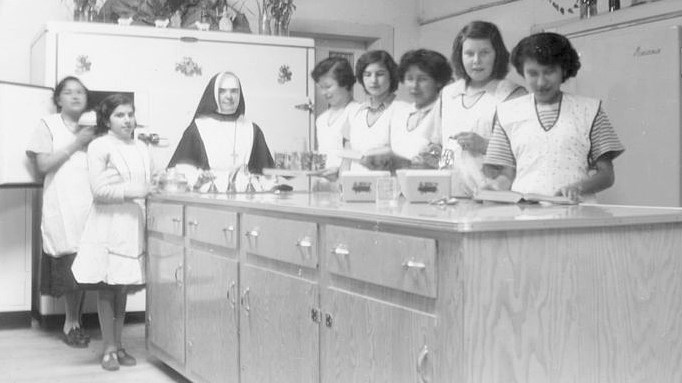Nutritional experiments on Aboriginal children and adults in the 1940s and '50s by federal government researchers were “absolutely unconscionable” but unsurprising, given the medical ethics of the time, says a Northern Ontario School of Medicine lecturer on medical ethics.
According to research published recently by Ian Mosby, a post-doctorate student at the University of Guelph, the first experiments began in 1942 in Norway House, Man., during a famine.
Of that group, 125 were selected to receive vitamin supplements, which were withheld from the rest.
Residential schools in Port Alberni, B.C., Kenora, Ont., Schubenacadie, N.S., and Lethbridge, Alta. were also targeted by the researchers.
At one school, milk rations were cut to less than half of the recommended amount for two years to get a baseline reading for when the allowance was increased.
In other experiments done on residential school children, some children received vitamin, iron and iodine supplements, while others didn't, and vitamin B1 was depressed to create another baseline before levels were increased.
Back when these experiments were being carried out, it was considered OK to do medical experiments any way you wanted, because it was considered to be “for the greater good,” said Dr. Jacques Abourbih.
But even taking this into consideration, everyone has a moral compass, and researchers should have been able to see these experiments were wrong, he said.
“You don't even have to be an ethicist to say 'Are you kidding me?'” said Abourbih, who lectures on medical ethics to family medicine residents at the Northern Ontario School of Medicine, and sits on local medical ethics boards.
These types of experiments were common at the time, he said.
For 40 years between 1932 and 1972, the U.S. Public Health Service conducted an experiment on 399 black men from Alabama — mostly illiterate sharecroppers — in the late stages of syphilis.
They had never been told what disease they were suffering from or of its seriousness.
“Even when penicillin became available, they did not treat these people,” Abourbih said. “So you can imagine the horrendous complications and diseases that these poor people went through, and they didn't even know they we're being experimented on.”
He also brings up the case of researchers who did medical experiments on people being held at Nazi concentration camps.
When one of these researchers was standing trail at Nuremberg, he said he didn't understand why he was being targeted, as other countries were doing the same types of research.
In a much more recent example, poverty-stricken African women with HIV were given medications by a drug company to combat the infection, while the same treatment was denied to the rest of the community's population.
The drug company claimed they'd spoken to the women and explained they were part of a research study, but when the authorities investigated, they said they had no idea they were being studied.
“In itself, this is an outrageous experiment that should have never happened,” Abourbih said. “How did it pass an ethics board? I have no idea.”
From his own experience on ethics boards, Abourbih said the standards are now very rigorous and designed to prevent unscrupulous medical experiments.
“In this respect, we have come a long way,” he said. “I hope that these horrendous things will never happen in humanity again, ever.”
Brittany Luby, an Aboriginal history specialist who was recently hired as a professor at Laurentian University, said Mosby's research reveals yet another dark chapter in Canada's history with indigenous peoples.
Like Abourbih, though, she said she's not surprised it happened, as at the time, indigenous people had very little power to resist such atrocities.
Luby, who is Aboriginal herself, said Mosby's findings are “totally ground-breaking,” as nobody has written about these experiments on Aboriginal people before.
There has, however, been a lot of testimony in the inquiry looking into Canada's residential schools about poor quality food and chronic underfunding, she said.
The nutritional experiments exposed by Mosby also remind Luby of oral testimony provided by an Inuit woman named Rhoda Katsak in 1993.
Katsak said she and her siblings were subjected to a series of skin graft experiments in Igloolik in the early 1970s.
“They took a chunk of skin off her arm and they stitched it onto her sibling's arm, and then they replaced the hole that they had made with her sister's skin,” Luby said.
“They were testing to see whether skin grafts would work and whether siblings would make a good match.”
Students often think that atrocities committed against Aboriginal people was something that happened in the 1800s, she said.
“I think this story shows us this is a history that we can still reach out and touch,” Luby said. “These could be people's grandparents.”
Join Sudbury.com+
- Messages
- Post a Listing
- Your Listings
- Your Profile
- Your Subscriptions
- Your Likes
- Your Business
- Support Local News
- Payment History
Sudbury.com+ members
Already a +member?
Not a +member?
Sign up for a Sudbury.com+ account for instant access to upcoming contests, local offers, auctions and so much more.
